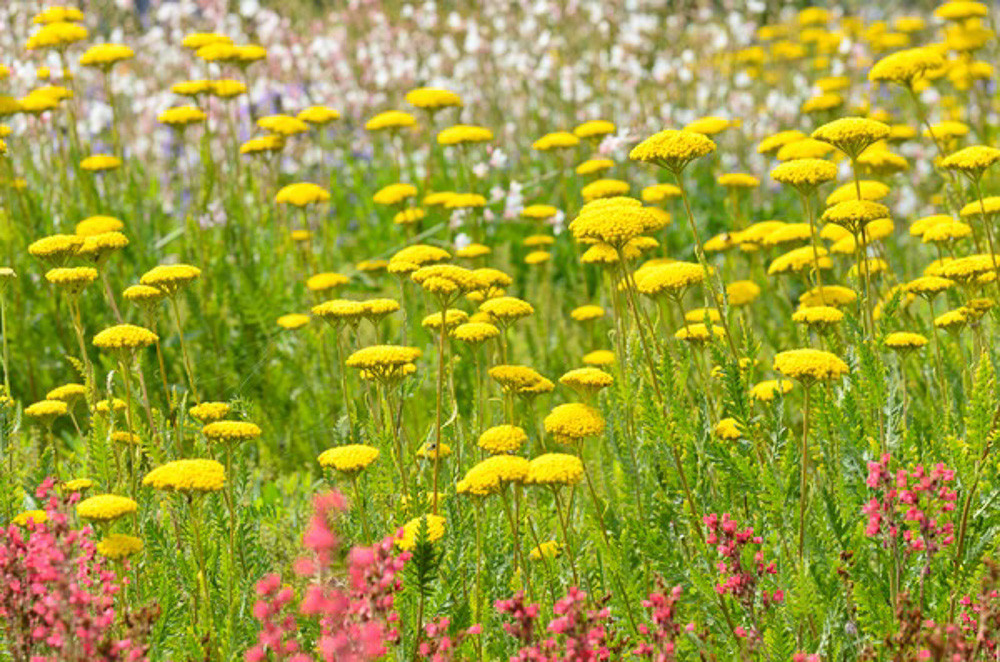Achillea (Yarrow)
Achillea, commonly known as yarrow, is a group of flowering plants in the Asteraceae family.
- Habit: Achillea species are characterized by their spreading, clumping habit, with feathery, fern-like foliage that adds texture to the garden. Plants usually grow about 2-4 feet (0.6-1.2 meters) tall and wide, though this can vary by species and cultivar.
- Hardiness: Generally, Achillea is hardy and easy to grow, tolerating a wide range of soil conditions. Most species are hardy in USDA zones 3-9.
- Flowers: Achillea is perhaps best known for its flowers, which appear in flat-topped clusters (corymbs) atop erect, often hairy stems. The individual flowers are small but numerous, creating a large, vibrant display. Colors range from white to yellow, pink, red, and various shades in between.
- Uses: Achillea is versatile in the garden and suitable for use in borders, rock gardens, and naturalized areas. They’re also popular in cottage gardens for their informal charm. Achillea is a favorite choice for xeriscaping due to its drought tolerance, and its flat flower clusters make it a great plant for cut flower arrangements.
- Benefits: Achillea is highly attractive to various beneficial insects, including bees, butterflies, and other pollinators, making it an excellent choice for a pollinator-friendly garden. It’s also generally resistant to deer and rabbit damage. Regarding medicinal uses, yarrow has been used for centuries in traditional medicine for its purported healing properties. The genus Achillea is derived from the Greek hero Achilles, who is said to have used yarrow to treat the wounds of his soldiers.
In summary, Achillea is a low-maintenance, versatile plant with aesthetic and ecological benefits. Its attractive, long-blooming flowers and feathery foliage make it a valuable addition to various garden settings.

